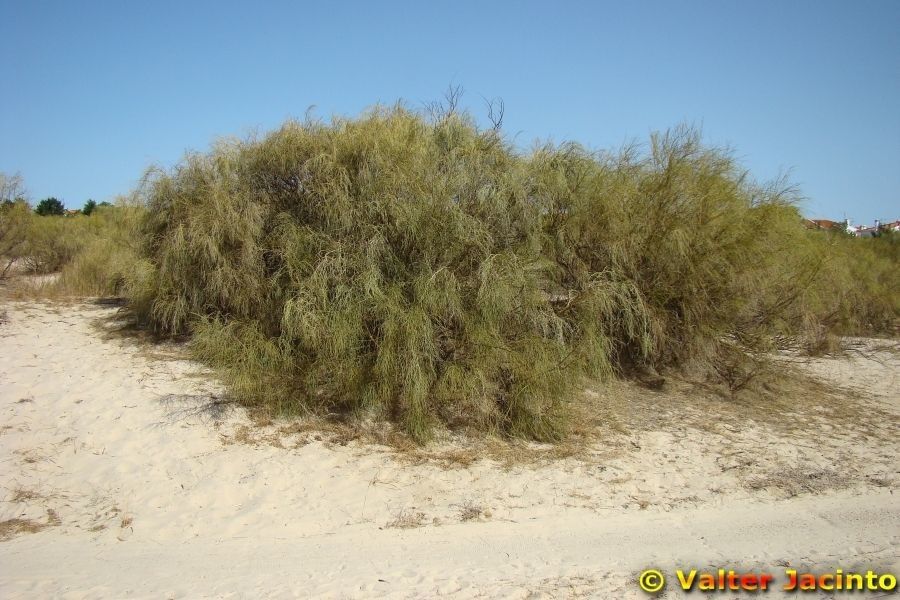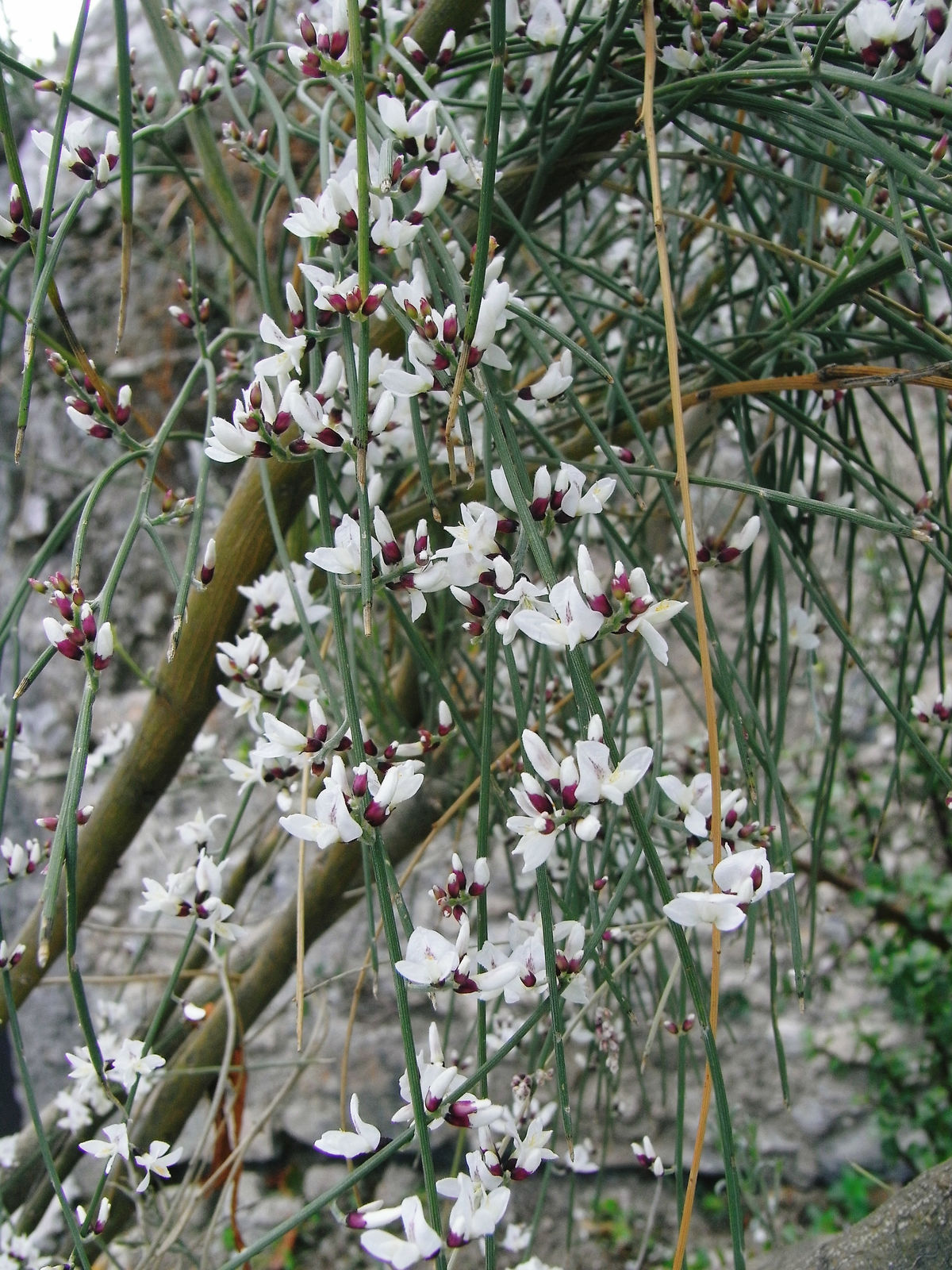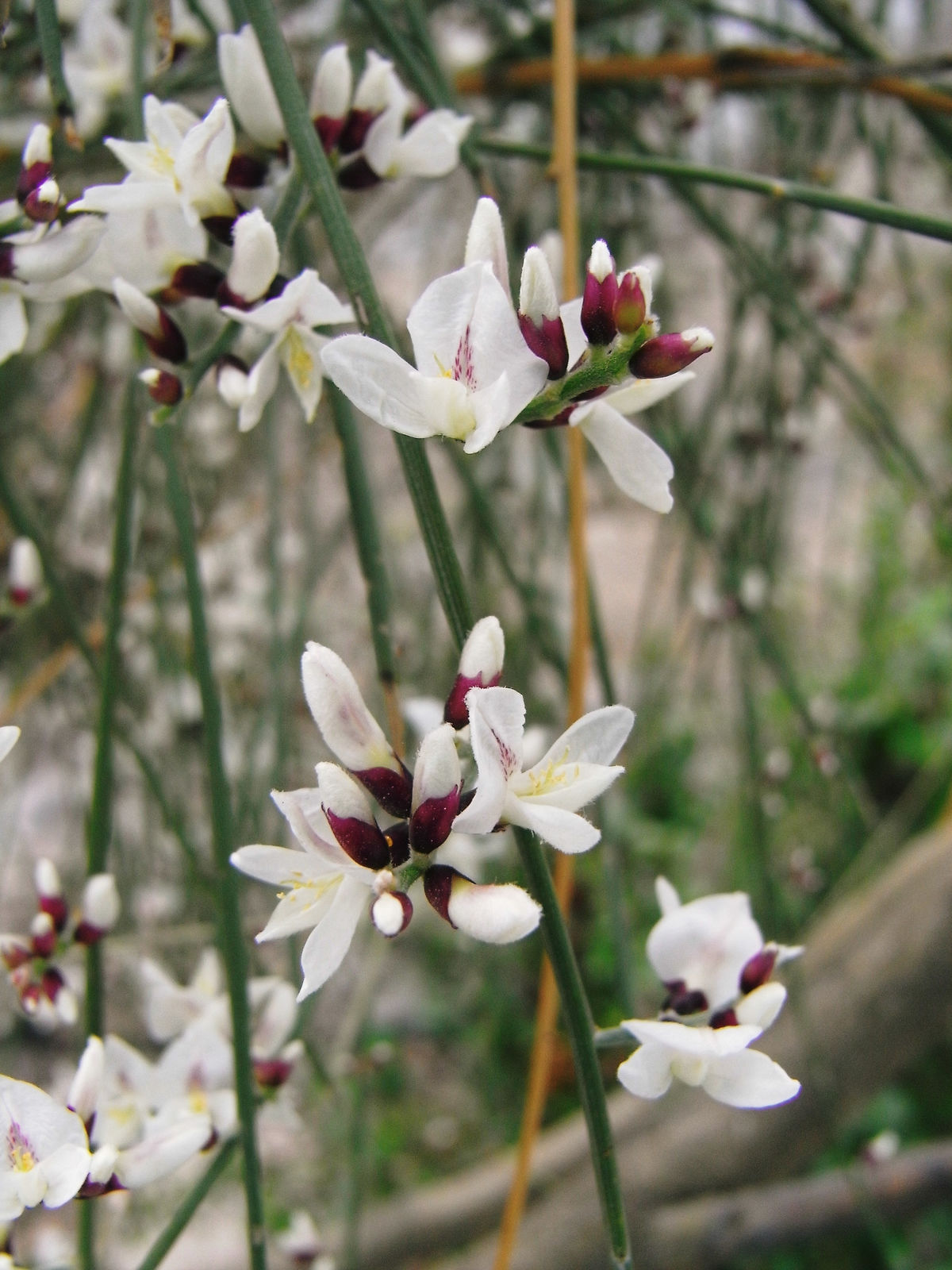Spanish Broom
retama monosperma
Also known as: ["False Broom","Flowering Broom"]
Overview
A deciduous shrub native to the Mediterranean region, known for its bright yellow flowers and spiny stems.
Benefits & Perks
["drought tolerant","fragrant flowers","wildlife attractant (bees, butterflies, birds)"]
Botanical Classification
| Phylum: | Magnoliophyta |
| Class: | Magnoliopsida |
| Order: | Fabales |
| Family: | Fabaceae |
| Genus: | Retama |
| Botanical Name: | Retama monosperma |
Plant Characteristics
Basic Information
- Category: Shrubs
- Suitable Location: rock garden or xeriscaped area
- Suitable For:
- Is Weed: No
- Allergenicity: moderate
Environmental Needs
- Climate: {"temperatureRange":"5–40°C"}
- Hardiness: {"zones":"8–11"}
- Misting: rarely required
- Drainage: Fast-draining
- Soil Type: Well-draining cactus or succulent mix with added perlite or sand.
Maintenance Level
- Maintenance Level: low
- Toughness Level: high
- Pruning Frequency: Annually in late winter or early spring before new growth begins.
- Pruning Intensity: Moderate to heavy, depending on desired shape and size.
Care Details
Ideal Sunlight Coverage:
Full sun (6–8 hours of direct sunlight daily); adjust for intense summer sun with partial afternoon shade.
Sunlight Tolerance Tips:
Acclimate gradually to intense light; protect from harsh midday sun; place outdoors in full sun or in a south-facing window indoors.
Care Requirements
Care Difficulty
moderatemoderate
Sunlight
full sun
Rotate plant weekly for even growth; use sheer curtains to filter intense summer sun; avoid shaded spots.
Watering
every 2–3 weeks, less in winter
Water thoroughly until runoff, ensure excellent drainage, and avoid frequent light watering.
Soil
fast-draining, sandy soil
pH: Slightly acidic to neutral (pH 6.0–7.0).
Ensure pots have drainage holes; avoid heavy garden soil; topdress with gravel for extra drainage.
Temperature
Warm temperatures (65–85°F / 18–29°C); tolerates mild frosts but prefers stable warmth.
Avoid sudden temperature shifts; protect from frost; maintain consistent warmth.
Fertilizing
every 3 months with slow-release fertilizer
Fertilize only when actively growing; flush soil occasionally to prevent salt buildup; stop fertilizing in fall.
Propagation
Methods
Stem cuttings
Step-by-Step Propagation Guide
- Select healthy stem, let cut end dry for 1–2 days, apply rooting hormone, plant in medium, maintain humidity, and wait for roots.
Best Time: Spring or early summer when the plant is actively growing.
Environment
Warm (70–80°F / 21–27°C), high humidity (60–70%), and bright indirect light.
Medium
Cactus mix or perlite and sand mixture
Hormone
Recommended to use rooting hormone for faster root development.
Timeline
Roots may develop in 4–8 weeks; establish in new pot after 3–6 months.
Tools Needed
Sharp knife or pruners, rooting hormone, small pots, propagation tray, plastic wrap.
Quick Tips
Allow cut end to callous before planting; maintain consistent moisture; use bottom heat if possible.
Pruning & Repotting
Pruning Guide
Method
Selective cutting of stems to shape plant; remove crossing or weak growth.
Pruning Plan
Prune to maintain shape, encourage bushiness, and remove dead or overgrown stems.
Tools
Pruning shears, sharp knife, gloves.
Checklist
Sterilize tools, prune during dormancy, remove dead wood, shape evenly.
Repotting Guide
Best Season
Early spring before active growth starts.
Pot Size
One size larger pot (e.g., +2–3 inches in diameter).
Method
Remove plant gently, trim roots if needed, place in slightly larger pot with fresh cactus mix, ensure drainage.
Suggestions
Repot every 2–3 years or when roots fill the pot; necessary to refresh soil and provide space.
Checklist
Check root bound status, use fresh soil, ensure drainage, water lightly after repotting.
Advanced Care Tips
Watering Mastery
Watering Checklist
Check soil dryness, water deeply, ensure drainage, adjust for season.
How to Apply Water Properly
Water directly at the root zone, apply slowly to allow deep penetration, ensure excess water drains away, and water in the morning to minimize evaporation.
Watering Schedule Tips
Water deeply but infrequently, allowing soil to dry out between waterings. Reduce watering in winter to once every 4–6 weeks, depending on conditions.
Soil Improvement
Add coarse sand, perlite, or pumice to improve drainage; incorporate compost for fertility.
Temperature Stress Management
Signs of Temperature Issues
Wilting, leaf drop, stunted growth, or yellowing in cold; scorching or leaf burn in excessive heat.
Cold Stress
Slows growth, may cause root damage, and increases susceptibility to pests.
Solution: Move to a warmer location, insulate roots with mulch, and reduce watering in cold periods.
Hot Stress
Leaves may scorch, growth may slow, and water demand increases.
Solution: Provide partial shade during peak heat, increase watering, and ensure good air circulation.
Fertilizing Guide
Fertilizing Checklist
Check growing season, dilute fertilizer, apply to moist soil, avoid winter feeding.
Fertilizing Method
Use a balanced, water-soluble fertilizer diluted to half strength every 4–6 weeks during growing season (spring/summer); avoid fertilizing in winter.
Common Problems & Solutions
Toxicity Warning
Cats
Slightly ToxicCats may experience mild gastrointestinal symptoms if they ingest the seeds of Retama monosperma. The toxic effects are generally limited to digestive discomfort.
⚠️ Symptoms:
🌿 Toxic Parts:
⚡ Toxic If:
if eaten
Dogs
Slightly ToxicThe seeds of Retama monosperma can cause mild gastrointestinal upset in dogs if ingested. The toxic compounds primarily affect the digestive tract, leading to discomfort.
⚠️ Symptoms:
🌿 Toxic Parts:
⚡ Toxic If:
if eaten
Humans
Slightly ToxicRetama monosperma seeds contain toxic compounds that can cause mild gastrointestinal distress and other mild symptoms upon ingestion. The physiological impact is generally limited to the digestive system.
⚠️ Symptoms:
🌿 Toxic Parts:
⚡ Toxic If:
if eaten
Frequently Asked Questions
Q: Is Retama monosperma toxic to pets?
A: Yes, it is toxic to both dogs and cats.
Q: Does this plant require frequent watering?
A: No, it is drought tolerant and requires minimal watering.
Q: Does Retama monosperma attract wildlife?
A: Yes, it attracts bees, butterflies, and birds due to its fragrant flowers.
Quick Reference
| Family: | Fabaceae |
| Care: | moderate |
| Light: | full sun |
| Water: | every 2–3 weeks, less in win |
Get Expert Care Tips
Download the Plantious app for personalized care reminders and plant identification!
Google Play App Store







